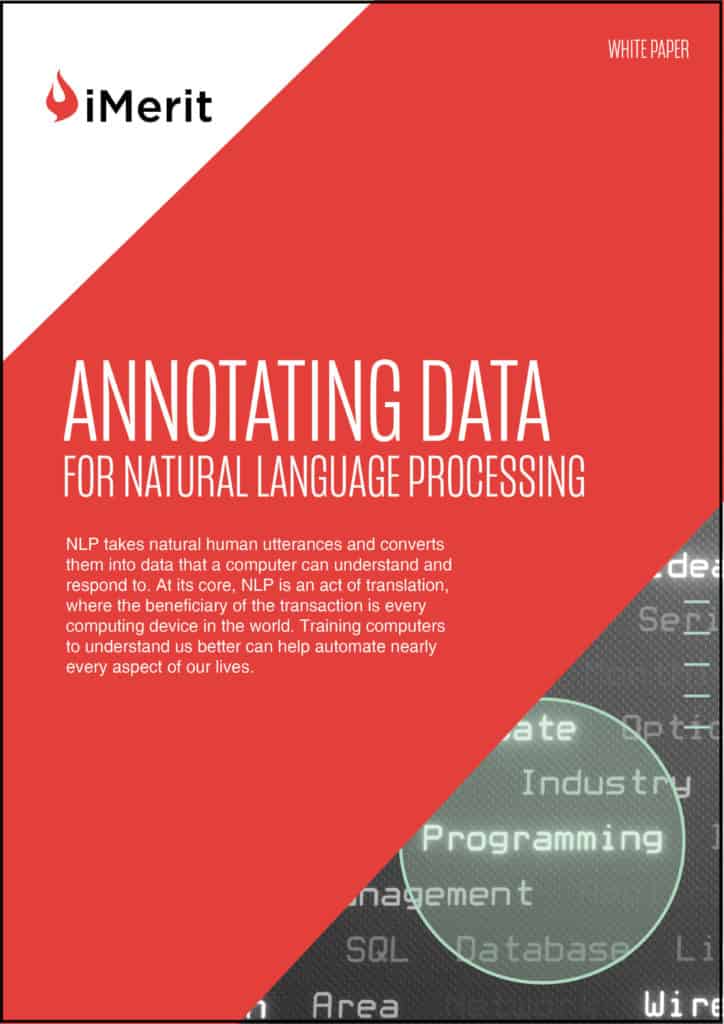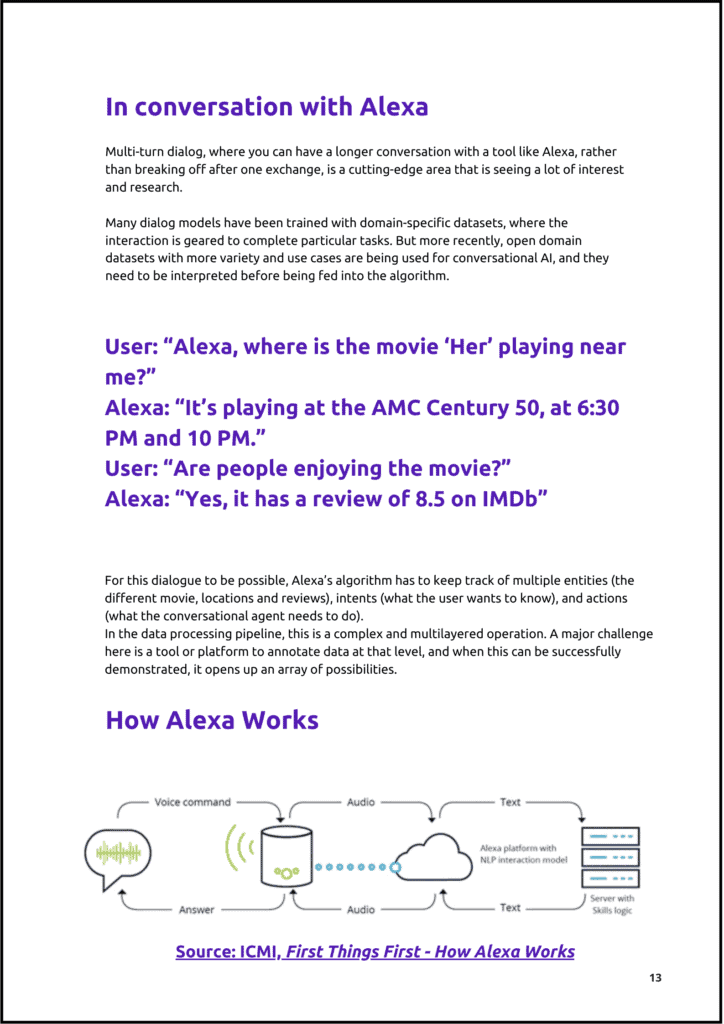Natural Language Processing (NLP) has entered our lives in a multitude of ways – from email auto-suggestion to voice assistants and chatbots. The flow of natural communication has opened up between humans and machines and the applications are boundless. But the challenges of successfully deploying NLP are huge. Humans speak, write, and express their thoughts in an infinite number of ways. Translating human language into a form that computers can understand requires a vast amount of linguistic training data. Accurate and well-structured training data, to enable supervised learning, can be the differentiator in the NLP space.
Read the white paper to:
- Understand how functions like Named Entity Recognition, Sentiment Analysis, and Salience Analysis help add layers of meaning to text data and prepare it for use in Artificial Intelligence use cases.
- Benefit from “lessons learned” in the NLP space with the inclusion of three case studies.
- Learn what’s next in NLP, including insights on conversational AI and multi-turn dialog.
- Understand how iMerit can help power your NLP algorithms with linguistic data.
First 300 words
Alexa, Google Assistant and Siri are members of many households today. The ubiquitous voice assistants can listen to your requests and respond with suggestions or even tell jokes to keep you entertained.
These are perhaps the most recognizable applications of Natural Language Processing (NLP). NLP has existed for decades in academia, but has become more visible in recent years with the increased adoption of Machine Learning and Deep Learning techniques. NLP and its associated processes and concepts form the backbone of many applications that aim to mimic or augment human interactions.
NLP takes natural human utterances and converts them into data that a computer can understand and respond to. At its core, NLP is an act of translation, where the beneficiary of the transaction is every computing device in the world. Training computers to understand us better can help automate nearly every aspect of our lives.
NLP performs its magic during the nanoseconds between when a command is sent to Alexa and a response is created by it. The voice command is simply a sequence of acoustic information, but with natural language understanding, Alexa abstracts over this information to identify meaningful units of sound, group sounds into words, group words into grammatical and semantic units, and connect these units to a set of concepts to “understand” them. To act on this understanding, Alexa then performs the correct function, constructs an appropriate response, and synthesizes the voice response, repeating the process somewhat in reverse.
Now that the flow of natural communication has been opened up between humans and computers the possibilities are infinite. A quick scan of the technology around us reinforces the point: NLP has entered our daily lives in the smallest of ways. The past few years have seen path-breaking developments in the linguistic space. One breakthrough example is…


